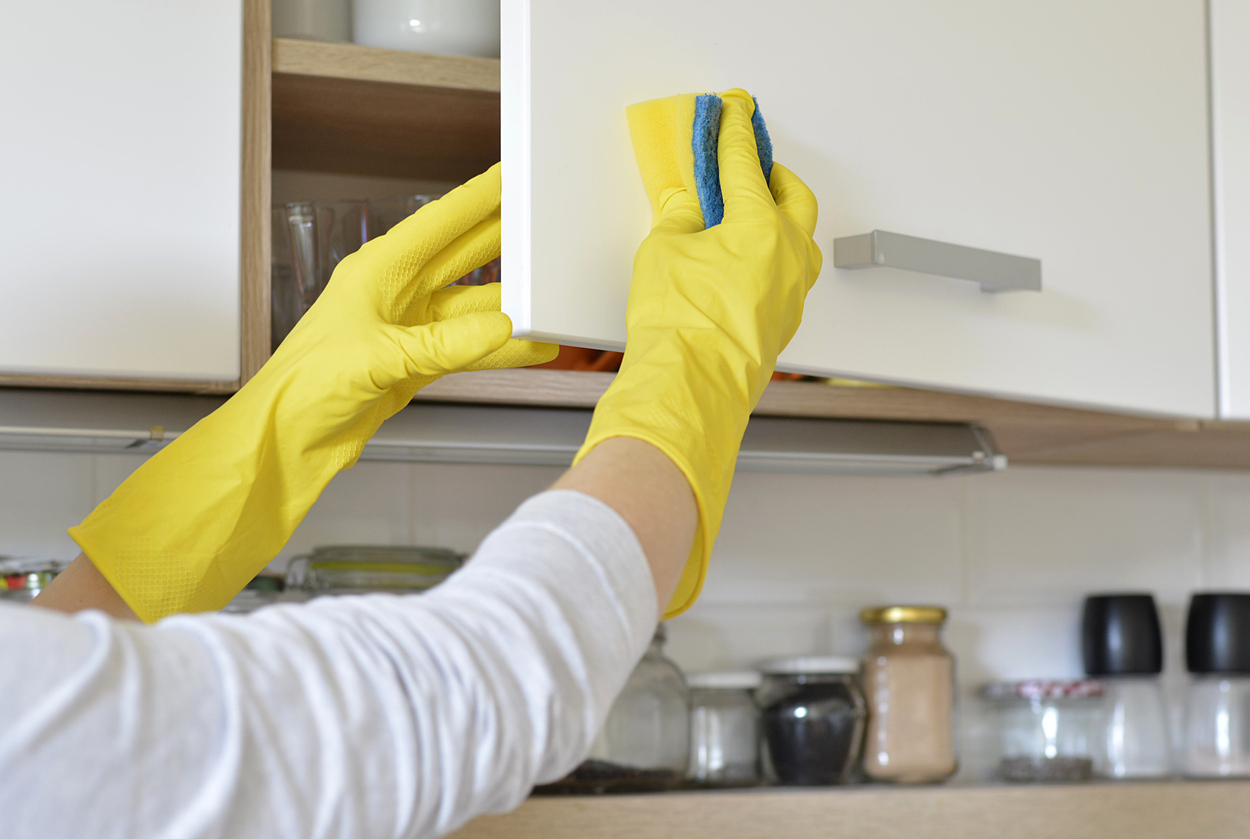Understanding Gloss Kitchen Cabinet Cleaners

Gloss kitchen cabinet cleaners are essential for maintaining the beauty and functionality of your kitchen. They help remove dirt, grease, and grime, restoring the shine and protecting the finish. These cleaners are specifically formulated to address the unique cleaning needs of gloss surfaces.
Types of Gloss Kitchen Cabinet Finishes
Gloss kitchen cabinet finishes come in various types, each requiring specific cleaning methods.
- Lacquer: This finish is known for its high gloss and durability, but it can be susceptible to scratches. It requires gentle cleaning with a soft cloth and a specialized cleaner designed for lacquer finishes.
- Polyurethane: This finish is very durable and resistant to scratches and stains. It can be cleaned with a mild soap and water solution or a dedicated polyurethane cleaner.
- Melamine: This finish is popular for its affordability and durability. It can be cleaned with a mild soap and water solution or a general-purpose cleaner.
Common Ingredients in Gloss Kitchen Cabinet Cleaners
Gloss kitchen cabinet cleaners typically contain ingredients designed to effectively clean and protect the finish.
- Surfactants: These ingredients help break down grease and grime, allowing them to be easily removed with water.
- Solvents: These ingredients help dissolve stubborn stains and residues.
- Polishing Agents: These ingredients help restore shine and protect the finish from scratches and wear.
Choosing the Right Cleaner: Gloss Kitchen Cabinet Cleaner

Navigating the world of gloss kitchen cabinet cleaners can feel overwhelming, with a plethora of options promising sparkling results. Understanding the nuances of each cleaner and how they align with your specific needs is crucial for achieving a successful cleaning experience.
Factors to Consider When Selecting a Cleaner
The ideal cleaner depends on the material and finish of your cabinets, as well as the level of grime you’re dealing with.
- Cabinet Material: Wood, laminate, and painted cabinets require different cleaning approaches. Wood cabinets are susceptible to damage from harsh chemicals, while laminate and painted cabinets are more durable.
- Finish: Glossy finishes are prone to streaks and smudges, so cleaners with a non-abrasive formula are preferred. Matte finishes, on the other hand, are more forgiving and can handle slightly stronger cleaners.
- Cleaning Needs: If you’re dealing with heavy grease or grime, a cleaner with degreasing agents is necessary. For routine cleaning, a mild cleaner will suffice.
Types of Gloss Kitchen Cabinet Cleaners
The market offers a wide range of cleaners, each with its own strengths and weaknesses.
- Multi-Surface Cleaners: These cleaners are designed for use on various surfaces, including kitchen cabinets. They typically contain mild cleaning agents and are suitable for routine cleaning. Examples include:
- Method Multi-Surface Cleaner: This plant-based cleaner is safe for use on most surfaces, including wood cabinets.
- Seventh Generation Multi-Surface Cleaner: Another plant-based option, this cleaner is effective at removing dirt and grime without harsh chemicals.
- Degreasing Cleaners: These cleaners are formulated to remove grease and oil from surfaces. They are ideal for tackling stubborn stains on kitchen cabinets. Examples include:
- 409 All-Purpose Cleaner: This cleaner is effective at removing grease and grime, but it should be used with caution on wood cabinets.
- Simple Green All-Purpose Cleaner: This cleaner is biodegradable and effective at removing grease and grime. It is also safe for use on most surfaces, including wood cabinets.
- Cabinet-Specific Cleaners: These cleaners are specifically designed for cleaning kitchen cabinets. They often contain ingredients that protect and nourish the wood, preventing damage. Examples include:
- Howard Feed-N-Wax Wood Polish: This cleaner is designed for use on wood cabinets and helps to restore their natural shine.
- Rejuvenate Cabinet and Furniture Polish: This cleaner is formulated to remove dirt, grime, and fingerprints from cabinets. It also leaves a protective coating that helps to prevent future damage.
Safety Precautions
Using any cleaner requires caution, especially when dealing with delicate surfaces like gloss kitchen cabinets.
- Always test the cleaner on an inconspicuous area: This will help you assess the cleaner’s compatibility with your cabinet material and finish.
- Follow the manufacturer’s instructions: This ensures proper dilution and application.
- Avoid using abrasive cleaners or sponges: These can scratch the surface of your cabinets.
- Always wear gloves: This will protect your hands from the chemicals in the cleaner.
- Ventilate the area: This will help to dissipate fumes.
- Keep cleaners out of reach of children and pets: This is a crucial safety measure to prevent accidental ingestion.
Gloss kitchen cabinet cleaner – A gleaming gloss finish on your kitchen cabinets demands a gentle touch, a cleaner that won’t dull the shine. But with all that sparkling surface, you’ll need ample storage space to keep your kitchen organized. Consider investing in 30 deep kitchen cabinets for an elegant and functional solution.
Then, you can confidently spritz your cabinets with a gloss cleaner, knowing you have enough room to house all your culinary treasures.
A gloss kitchen cabinet cleaner can bring back the shine to your cabinets, but don’t forget about the details. A touch of elegance can be added with kitchen cabinet pelmet moulding , which frames your cabinets and adds a touch of architectural interest.
Once you’ve cleaned and adorned your cabinets, they’ll be the envy of any kitchen.
